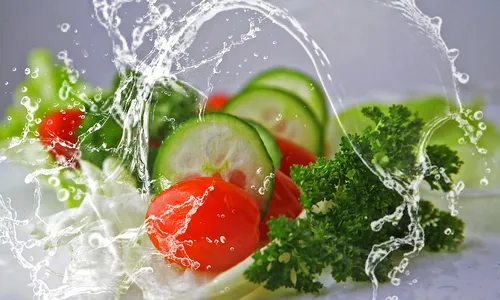Secret Superpowers on a Shoestring Budget: Affordable Foods You're Overlooking

Let’s be honest, the word “superfood” often conjures up images of exotic berries from faraway lands with price tags that could make your wallet weep. We’re bombarded with ads for goji berries, acai bowls, and spirulina smoothies, all promising miraculous health benefits but often feeling financially out of reach. But what if I told you that you’re likely walking past equally potent, nutrient-dense powerhouses every single time you visit your local grocery store? These aren't some obscure ingredients requiring a special trip to a fancy health food store. They’re the humble heroes of the produce aisle, the pantry staples you might be taking for granted. Get ready to have your perception of superfoods flipped upside down, because we’re about to uncover 10 incredibly affordable superfoods that deserve a prime spot in your kitchen and on your plate!
1. The Humble Bean: A Protein and Fiber Powerhouse That Won't Break the Bank
Think about it – beans are a staple in cuisines around the world for a reason. These unassuming legumes (kidney, black, pinto, chickpeas, lentils – the whole gang!) are nutritional goldmines. Packed with plant-based protein, they keep you feeling full and satisfied, aiding in weight management and muscle building. But that’s not all! Beans are also loaded with fiber, which is crucial for digestive health, regulating blood sugar levels, and even lowering cholesterol. Plus, they’re brimming with essential minerals like iron and folate. And the best part? A bag of dried beans or a can of cooked beans costs just a fraction of what you’d pay for many other protein sources. Toss them into soups, stews, salads, or mash them into delicious dips. The versatility of beans is only matched by their incredible affordability and nutritional value.
2. Oats: More Than Just a Bland Breakfast
Oats often get a bad rap for being… well, a bit boring. But beneath that mild flavor lies a nutritional powerhouse. These humble grains are packed with soluble fiber, particularly beta-glucan, which has been shown to lower bad cholesterol levels and stabilize blood sugar. Oats also provide sustained energy, keeping you feeling fuller for longer and preventing those mid-morning energy crashes. And let’s talk about cost – a big bag of rolled oats is incredibly budget-friendly and can last you for weeks. Get creative beyond plain oatmeal! Use oats in smoothies, bake them into muffins or granola bars, or even use them as a binder in meatloaf. It’s time to rediscover the incredible potential of this affordable superfood.
3. The Mighty Cabbage: An Affordable Detox Champion
Cabbage might not be the most glamorous vegetable, but it’s a nutritional rockstar hiding in plain sight. This cruciferous veggie is packed with vitamins C and K, as well as potent antioxidants and phytonutrients that can help fight inflammation and protect against chronic diseases. It’s also a fantastic source of fiber, promoting gut health. And the price? Cabbage is consistently one of the most affordable vegetables in the produce aisle. Shred it for salads and slaws, ferment it into sauerkraut for added probiotic benefits, stir-fry it, or add it to soups and stews. Don’t underestimate the power of this budget-friendly brassica!
4. Sweet Potatoes: A Sweet Deal for Your Health
Forget expensive exotic roots; the humble sweet potato is a nutritional superhero in disguise. Unlike its white potato cousin, the sweet potato boasts a vibrant orange hue thanks to its high content of beta-carotene, a powerful antioxidant that your body converts to vitamin A, crucial for vision, immune function, and skin health. Sweet potatoes are also a good source of fiber, vitamin C, and potassium. And they’re surprisingly affordable! Roast them, mash them, bake them into fries, or add them to stews. Their natural sweetness makes them a satisfying and healthy addition to any meal.
5. Brown Rice: The Unrefined Grain That Offers So Much More
While white rice is a common pantry staple, its less processed cousin, brown rice, offers a significant nutritional upgrade without a hefty price tag. Brown rice retains its bran and germ layers, which are packed with fiber, magnesium, selenium, and B vitamins. This means it has a lower glycemic index than white rice, leading to more stable blood sugar levels and sustained energy. It also contributes to better digestive health thanks to its higher fiber content. A bag of brown rice is generally quite affordable and can be used in a variety of dishes, from stir-fries and salads to side dishes and even grain bowls.
6. Bananas: Nature's Convenient and Cost-Effective Energy Bar
Often overlooked for their ubiquity, bananas are a nutritional powerhouse packed in a convenient and affordable package. They’re an excellent source of potassium, an electrolyte crucial for maintaining healthy blood pressure and nerve function. They also provide a good dose of vitamin B6, which plays a role in brain development and metabolism, and fiber, which aids in digestion. Plus, they’re incredibly versatile – eat them as a quick snack, slice them into your oatmeal or yogurt, blend them into smoothies, or even use them in baking as a natural sweetener. Their affordability and portability make them a true superfood for busy, budget-conscious individuals.
7. Eggs: The Incredible, Edible, and Economical Protein Source
Eggs often fluctuate in price, but they consistently remain one of the most affordable and versatile sources of high-quality protein available. They contain all nine essential amino acids, making them a complete protein, crucial for muscle building and repair. Eggs are also packed with vitamins and minerals, including choline, which is important for brain health. Don’t shy away from the yolks! While they contain cholesterol, for most people, dietary cholesterol has a minimal impact on blood cholesterol levels. Enjoy eggs scrambled, fried, boiled, poached, or baked – their versatility makes them a budget-friendly superfood that can be incorporated into any meal.
8. Peanut Butter (Natural, Please!): A Nutritious and Satisfying Spread
While fancy nut butters can come with a hefty price tag, good old-fashioned natural peanut butter (the kind with just peanuts and maybe a little salt) is an affordable and nutritious option. It’s a good source of protein, healthy monounsaturated fats, and fiber, helping you feel full and satisfied. It also contains vitamins and minerals like vitamin E and magnesium. Spread it on whole-wheat toast, add it to smoothies, use it as a dip for fruits and vegetables, or incorporate it into sauces and dressings. Just be sure to choose natural varieties without added sugars and unhealthy oils.
9. Frozen Fruits and Vegetables: Affordable Nutrition That Lasts
Don’t underestimate the power of the freezer aisle! Frozen fruits and vegetables are often just as nutritious as their fresh counterparts, sometimes even more so, as they are typically harvested at their peak ripeness and frozen immediately, locking in their nutrients. What’s more, they’re often more affordable than fresh produce, especially when certain fruits and vegetables are out of season. Plus, they have a longer shelf life, reducing food waste and saving you money. Stock your freezer with frozen berries, spinach, broccoli, and more to easily add a boost of nutrition to your smoothies, soups, stews, and baked goods.
10. Garlic and Onions: Flavor Enhancers with Hidden Health Benefits
While often used as flavor bases in cooking, garlic and onions are more than just aromatic additions. They contain powerful sulfur compounds that have been linked to various health benefits, including anti-inflammatory and immune-boosting properties. Garlic, in particular, has been studied for its potential to lower blood pressure and cholesterol levels. Onions are a good source of antioxidants and may also have anti-inflammatory effects. And the best part? Garlic and onions are incredibly affordable and can add a wealth of flavor and health benefits to virtually any savory dish.
Making Affordable Superfoods a Part of Your Everyday Life
The myth that healthy eating has to be expensive is just that – a myth. By focusing on these affordable and readily available superfoods, you can nourish your body with essential nutrients without emptying your wallet. The key is to be mindful of your grocery shopping, prioritize whole, unprocessed foods, and get creative in the kitchen. Embrace the humble bean, rediscover the power of oats, and don’t overlook the nutritional punch packed by everyday fruits and vegetables. Your body (and your bank account) will thank you for it!
FAQ
Are frozen fruits and vegetables less nutritious than fresh?
In many cases, frozen fruits and vegetables can be just as nutritious, if not more so, than fresh produce. They are typically harvested at their peak ripeness when nutrient content is highest and then quickly frozen, which helps to preserve vitamins and minerals. Fresh produce, on the other hand, can lose some nutrients during transportation and storage.
How can I incorporate more beans and lentils into my diet?
Beans and lentils are incredibly versatile! You can add them to soups, stews, chili, and salads. They can be mashed into dips or spreads, used as a base for vegetarian burgers, or incorporated into pasta sauces. Start by adding a serving a few times a week and gradually increase your intake.
Is it better to buy organic versions of these affordable superfoods?
Choosing organic is a personal preference and can depend on your budget and priorities. While organic produce may have lower levels of pesticide residues, conventional versions of these affordable superfoods still offer significant nutritional benefits. If your budget is tight, prioritizing a variety of fruits and vegetables, whether organic or conventional, is generally more beneficial than limiting your intake due to cost.
How can I make brown rice more flavorful?
Cooking brown rice in broth instead of water can add flavor. You can also sauté aromatics like onions and garlic before adding the rice and liquid. Herbs and spices can be added during cooking or after. Toasted nuts and seeds also make a great topping for added flavor and texture.
Are there any downsides to eating bananas every day?
For most healthy individuals, eating a banana or two per day is perfectly fine and can be beneficial due to their nutrient content. However, excessive consumption of anything can have potential downsides. Bananas are relatively high in potassium, so individuals with kidney issues should monitor their intake. Moderation is key for any food.
Explore more blogs on health:




